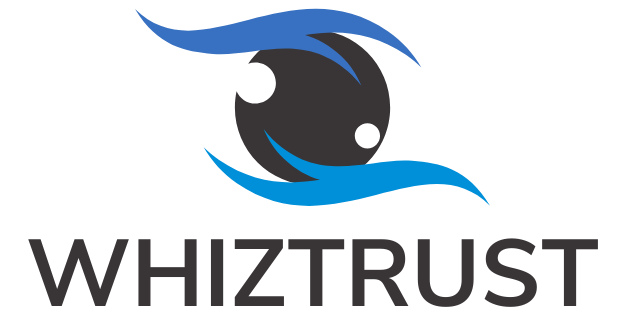In today’s digital age, cloud computing is like the superhero of technology—saving businesses from the clutches of outdated hardware and pesky server meltdowns. But just like every superhero has a price, so does the cloud. Understanding cloud computing costs can feel like deciphering an ancient scroll written in a language only IT wizards understand.
Table of Contents
ToggleUnderstanding Cloud Computing Cost
Cloud computing offers great advantages but understanding its costs can be complex. Numerous factors influence pricing, making it essential to comprehend this landscape thoroughly.
Definition of Cloud Computing
Cloud computing refers to delivering computing services—including storage, processing, and applications—over the internet. Businesses leverage cloud platforms to access these resources without requiring physical infrastructure. Services are typically provided on a pay-as-you-go basis, helping organizations manage expenses while gaining flexibility. Different models, such as Infrastructure as a Service (IaaS) and Software as a Service (SaaS), affect pricing structures. Each model caters to various business needs, impacting overall cost.
Factors Affecting Cost
Several factors drive cloud computing costs. Usage levels, characterized by data storage and bandwidth consumption, significantly influence pricing models. Different cloud providers employ varied pricing strategies, including on-demand rates and subscription plans. Additional costs arise from premium services, such as enhanced security features and technical support. Geographic location also plays a role; different regions may have distinct pricing based on local demand and economic conditions. Understanding these factors helps businesses optimize their cloud spending effectively.
Types of Cloud Services

Cloud computing offers three main service models, each with distinct features and benefits. Understanding these types helps businesses choose options that best fit their needs.
Infrastructure as a Service (IaaS)
IaaS provides virtualized computing resources over the internet. Users access essential hardware components like servers, storage, and networking without investing in physical equipment. Scalability stands out as a significant advantage of IaaS, allowing businesses to adjust their resources based on demand. Major providers include Amazon Web Services and Microsoft Azure, which offer pay-as-you-go pricing structures. Cost efficiency also plays a vital role, as businesses pay for only what they use, enhancing budget management.
Platform as a Service (PaaS)
PaaS simplifies application development by offering a platform for building, testing, and deploying applications. Developers benefit from integrated development environments, tools, and services that streamline workflows. This model reduces the complexity of managing underlying infrastructure while focusing on app creation. Examples of PaaS include Google App Engine and Heroku. Costing typically aligns with the resources used during development cycles, ensuring businesses manage expenses effectively while supporting innovation.
Software as a Service (SaaS)
SaaS delivers software applications over the internet, eliminating the need for local installation. Users access applications through web browsers, enhancing flexibility and collaboration. Common examples include Salesforce and Microsoft 365, which often operate on subscription-based pricing. Businesses enjoy predictable costs associated with SaaS, enabling them to budget more accurately. Moreover, updates and maintenance are handled by providers, reducing operational burdens for organizations.
Pricing Models for Cloud Computing
Cloud computing offers several pricing models tailored to meet various business needs, allowing organizations to choose options that best align with their operations and budgets. Understanding these models can lead to more effective cost management.
Pay-As-You-Go
Pay-as-you-go enables users to pay only for resources they utilize, providing flexibility and cost efficiency. This model is particularly advantageous for businesses that experience fluctuating workloads. Users can scale resources up or down based on demand, avoiding hefty upfront investments in infrastructure. Major providers, like Amazon Web Services, support this model. Monthly bills reflect actual usage metrics, ensuring transparency in expenditures.
Subscription-Based Pricing
Subscription-based pricing involves a fixed recurring cost for a set period. Companies benefit from predictable budgeting with services like Salesforce and Microsoft 365. Users often gain access to a comprehensive suite of features under this model. Renewals generally occur quarterly or annually, giving organizations ample time to evaluate services. Additional advantages include regular updates and maintenance from the provider, minimizing operational burdens.
Reserved Instances
Reserved instances offer a cost-effective option for businesses with stable workloads. Organizations commit to using a specific amount of resources for a defined term, usually one to three years, in exchange for substantial discounts. This model suits enterprises seeking budget predictability while ensuring better resource allocation. Providers such as Amazon Web Services and Microsoft Azure frequently promote reserved instances to encourage long-term commitments, enhancing overall value.
Cost Management Strategies
Cloud computing cost management involves effective strategies to control expenses and maximize resource efficiency.
Budgeting for Cloud Expenses
Budgeting for cloud expenses requires careful planning and consideration. Identify the total anticipated costs by evaluating current and future needs. Establish budget limits based on historical usage patterns and projected growth rates. Regularly monitor spending to ensure alignment with budget constraints. Prioritize essential services while evaluating optional expenses. Effective budgeting leads to informed decisions that prevent unnecessary overspending.
Tools for Monitoring Usage
Tools for monitoring usage provide valuable insights into cloud spending. Utilize cloud cost management platforms like AWS CloudWatch or Azure Monitor for real-time analytics. Track resource consumption across various services and identify usage trends. Generate reports that highlight anomalies in spending patterns. Leverage tagging features to categorize expenses by project or department for better accountability. By implementing these tools, businesses gain better control over expenses and improve financial efficiency.
Optimizing Resource Usage
Optimizing resource usage enhances cost efficiency in cloud environments. Right-size instances based on workload requirements to eliminate over-provisioning. Implement autoscaling features to adjust resources dynamically, ensuring alignment with demand. Use reserved instances for predictable workloads to lower costs significantly. Schedule automated shutdowns for unused resources during non-peak hours. Continuous monitoring and adjustments lead to optimal resource allocation, reducing overall expenditure.
Navigating the costs of cloud computing requires a strategic approach. By understanding the various pricing models and factors that influence expenses businesses can make informed decisions that align with their goals. Effective budgeting and continuous monitoring play vital roles in optimizing cloud spending.
Utilizing tools for tracking usage and implementing cost management strategies can significantly enhance financial efficiency. As cloud technology continues to evolve staying informed and adaptable will empower organizations to harness its full potential while managing costs effectively.


